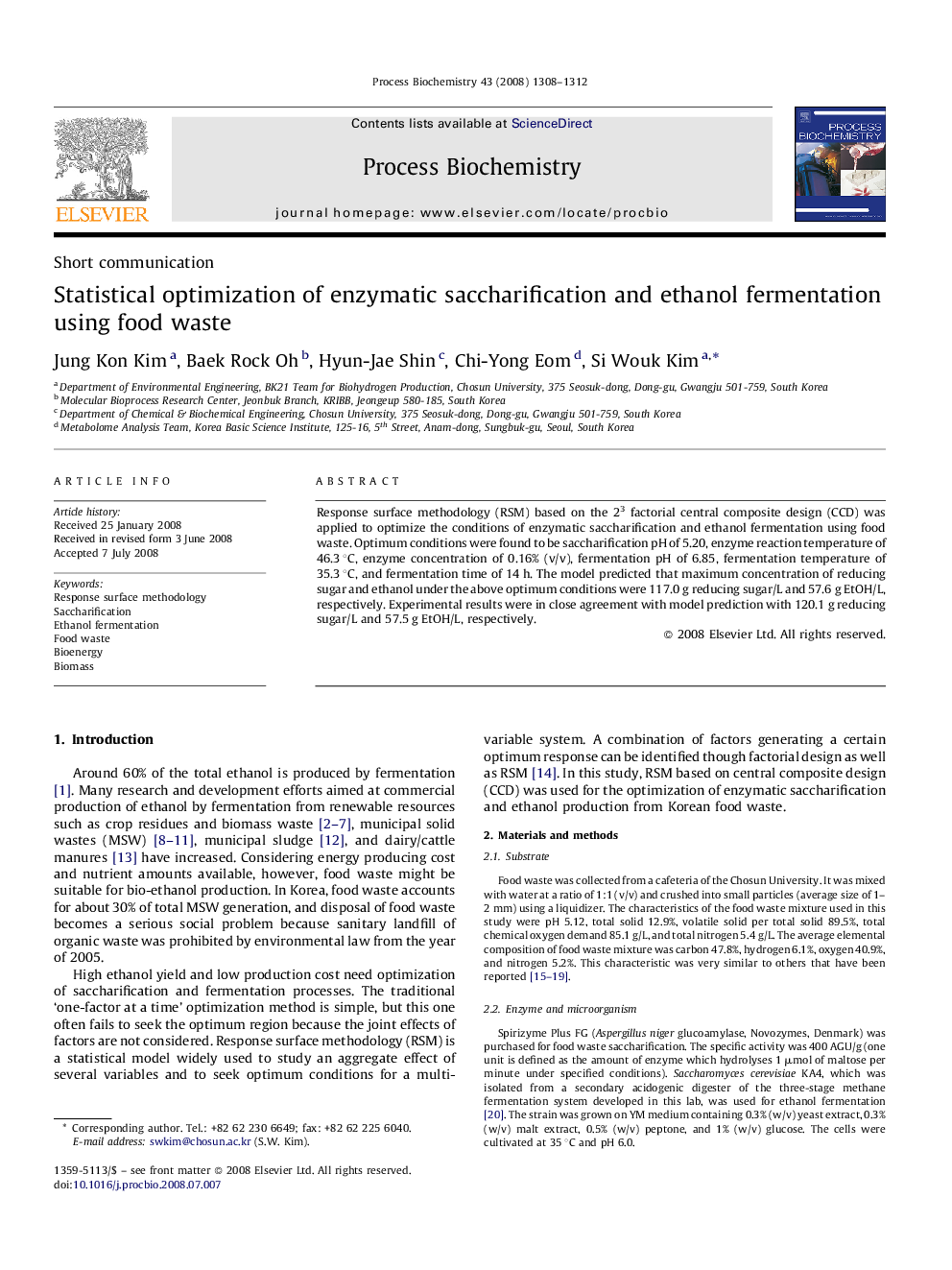| Article ID | Journal | Published Year | Pages | File Type |
|---|---|---|---|---|
| 35325 | Process Biochemistry | 2008 | 5 Pages |
Abstract
Response surface methodology (RSM) based on the 23 factorial central composite design (CCD) was applied to optimize the conditions of enzymatic saccharification and ethanol fermentation using food waste. Optimum conditions were found to be saccharification pH of 5.20, enzyme reaction temperature of 46.3 °C, enzyme concentration of 0.16% (v/v), fermentation pH of 6.85, fermentation temperature of 35.3 °C, and fermentation time of 14 h. The model predicted that maximum concentration of reducing sugar and ethanol under the above optimum conditions were 117.0 g reducing sugar/L and 57.6 g EtOH/L, respectively. Experimental results were in close agreement with model prediction with 120.1 g reducing sugar/L and 57.5 g EtOH/L, respectively.
Related Topics
Physical Sciences and Engineering
Chemical Engineering
Bioengineering
Authors
Jung Kon Kim, Baek Rock Oh, Hyun-Jae Shin, Chi-Yong Eom, Si Wouk Kim,
